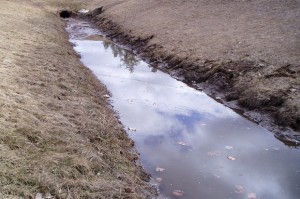
Oklahoma Outcry Continues Against EPA’s ‘Waters of the United States’ Rule
-
Logan Layden
Since the federal Clean Water Act first became law in 1972, there’s been confusion over which bodies of water qualify for protection under its provisions. Enter the U.S. Environmental Protection Agency’s Waters of the U.S. rule, which means to bring clarity to the situation.
What it actually has done is cause a lot of controversy. The EPA and U.S Corps of Engineers are taking comment on the rule, and hearing a lot complaints from officials in Oklahoma. Attorney General Scott Pruitt was one of 11 state AGs who wrote a letter to the EPA and Corps in early October calling the scope of the federal government’s proposed rule “truly breathtaking.”
Now, Gov. Mary Fallin and the Oklahoma Farm Bureau are submitting their letters of opposition.
Fallin’s letter calls the proposed WOTUS rule a “power grab”:
“The EPA and the Corps are imposing an additional layer of bureaucracy instead of providing common sense and clarity in the WOTUS proposal,” said Fallin. “This proposal is confusing and is going to delay development of critical infrastructure. It also makes development rights of Oklahomans more ambiguous and will have a negative impact on our economy. Since EPA and the Corps failed to provide meaningful consultation during development of the proposed rule with the states or the regulated community they have developed an unworkable solution that must be withdrawn.”
Oklahoma Farm Bureau is also full-throated in its opposition:
OKFB is concerned that the proposed rule’s categories of “waters of the United States” and associated definitions are overbroad and ambiguous, suffer from a variety of legal infirmities, and are not supported by the science. Contrary to the agencies’ assertions, the proposed rule will lead to more confusion for regulators and the regulated community, and will by no means establish the certainty or predictability the agencies claim.
Conservatives and groups like the Farm Bureau worry the new rule would give the federal government control of pretty much every bit of water in the country, even ditches and dry ponds that only hold water when it rains. In its letter, the Farm Bureau says “remote features on the landscape that carry only minor water volumes (e.g. ephemeral drainages, storm sewers and culverts, directional sheet flow during storm events, drain tiles, man-made drainage ditches and arroyos), would now automatically be subject to federal CWA jurisdiction.”
But as StateImpact reported in September, the EPA officials say farmers’ fears are unfounded, that exemptions have been carved out for pretty much any regular farming or ranching activity, and that the proposed rule actually includes fewer waterways than are covered now.
“People are now wondering, ‘Oh, if the words are going to change, is it going to substantially change the meaning.’ And we actually — we don’t see it that way,” Ken Kopocis with the EPA’s Water Office says.
Whatever final form the WOTUS rule takes, it seems probably that states like Oklahoma will sue to block it.

